Modern TV technology has proven to make the letters ‘Q’ and ‘O’ a really big deal. It is no longer just a battle between brands but about the quality display. If you want to spend your 50k to get a new TV you will, of course, want to know which display is the best between QLED and OLED. They may be using similar acronym’s but the truth is that Samsung’s QLED and LG’s OLED are as different as they can get.
What is QLED?
For the last couple of years, Samsung has been branding its TVs as “QLED”. It stands for Quantum Light-Emitting Diode. In English, it means that QLED is basically a regular LED TV, with an LCD (backlight) panel only with nanoparticles (quantum dots) that enhance its brightness and colour.
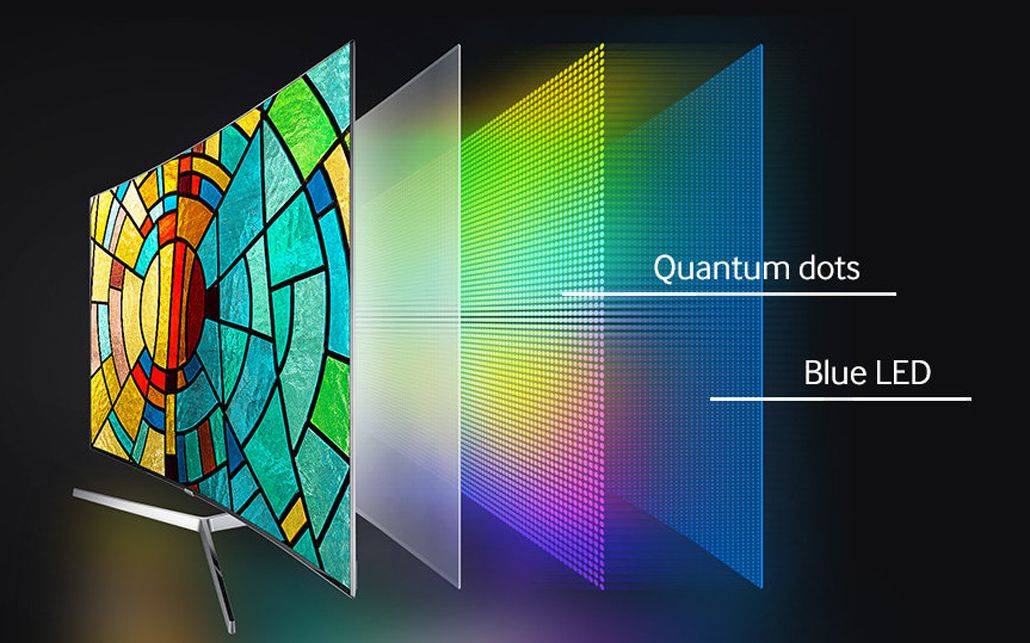

Image courtesy LifeWire
The quantum dots may sound cool but it still produces light typically the same as the old LED TVs. Introduced in 2013 by Sony, the tech was a clever way to improve the picture quality of LED displays. Samsung, later on, began selling its QLED TVs and established a licensing partnership with other manufacturers, which is why more brands have been taking up the tech. This includes Sony, Samsung, Hisense, Vizio and TCL.
An OLED TV Does Not LCD At All
On the other hand, OLED pays a whole different ball game. The term (Organic Light-Emitting Diode) may sound familiar but you will be surprised to find out that OLED TVs have no LCD panel at all.
Instead, they use teeny, tiny LED lights that work individually, producing their own colour and light. The lights (pixels) then work collectively to produce the final product that your eyes get to see.
Image courtesy LG
The tech has actually had the OLED TVs being referred to as “emissive” that you can use to impress your friends. As of now, LG Display is the only manufacturer of OLED displays in the world. They are then sold to LG Electronics who make the end product. Other brands that stand to benefit include Sony, Philips, Hisense and Panasonic. That, however, does not mean that you will not notice significant differences in quality from one OLED TV to another.
OLED vs QLED
OLED TVs have proven to have a number of advantages over QLED. But most would agree that when it comes to OLED, the biggest headstart is the superb black level that is achieved. As mentioned before, QLED depends on a backlight that it has it dim and block what remains for dark scenes. But even then, the black tends to look a little faded as the backlight still shines on the blacks.
An OLED TV though turns off the pixel, making it emit no light nor colour. The black is then as dark as it would be when the TV is completely off, making it stand out over QLED.
It is also a lot easier to make flexible screens with OLED as there are no layers like the QLED. That is why LG pioneered in the manufacture of rollable TVs, a feat that no other company including Samsung has done yet.
But there is also a lot more when it comes to the differences between these displays that we should look at.
Contrast
The difference between the darkest part of an image and the brightest is what we refer to as contrast. So, if a TV can seamlessly produce the best black portion, it does not have to do as much for the bright parts to stand out. This is one thing that the OLED TV easily does, therefore offering impressive levels of contrast.
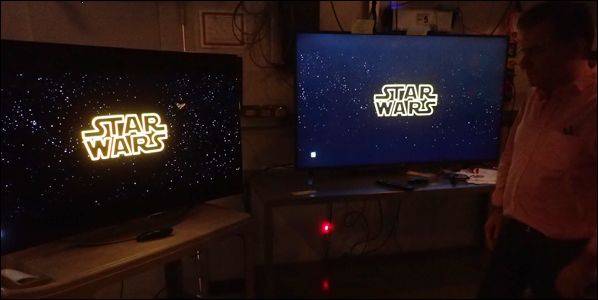

Image courtesy How-To Geek
QLED, however, is trampled over as it is forced to dim the LED backlight, block the remaining light, something that is quite hard to do. So without the perfect blacks, the human eye doesn’t get to be impressed as much by the brighter parts of the image.
So, when it comes to contrast levels, OLED comes out on top.
Brightness and Colour Space
When it comes to the vibrance, QLED TVs stand at a huge advantage as they use separate backlights. This is far different from OLED that rely on each pixel to create its own light.
So, adding a quantum dot’s ability to maximise that light and produce brighter hues in the colour spectrum just makes it the QLED win in every way. That is why Samsung TVs have actually proven to be some of the most vibrant in the market to date.
The individual pixels surely don’t stand a chance when it comes to producing the same amount of light.
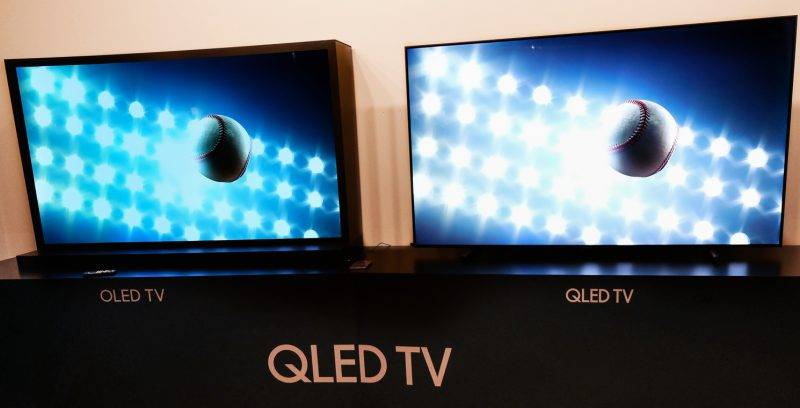

Image courtesy Home Theatre Mag
In terms of colour, OLED had initially proven to be better, but QLED TVs have of late been getting better. According to Samsung, their TVs claim better-saturated colours at extreme brightness levels.
Meanwhile, OLED’s colours look much more natural, thanks to the fact that blacks are almost perfect. While one, may depend heavily on its brightness for colour and another on the contrast levels, none of the two has so far proven to be hugely better over the other.
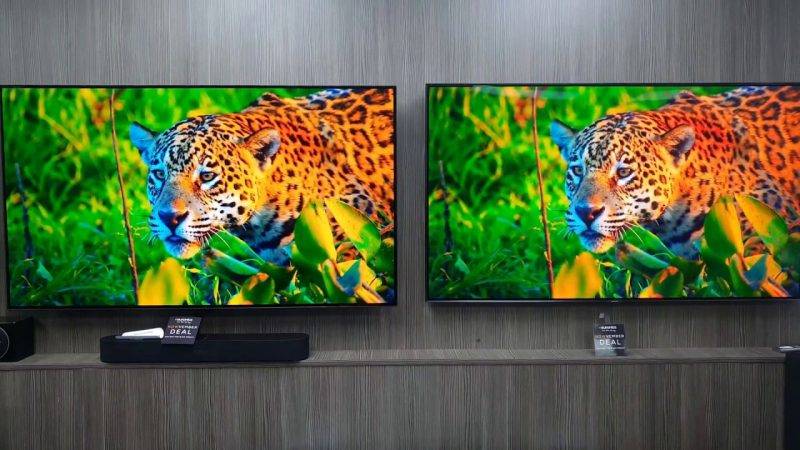

Image courtesy TellyDan/ YouTube
Viewing Angle
With QLED screens, you can have the best view from the dead centre. Moving any farther to the right or left diminishes the picture in both colour and contrast. This may differ between models and brands but it is always noticeable despite best efforts to eliminate the issue.
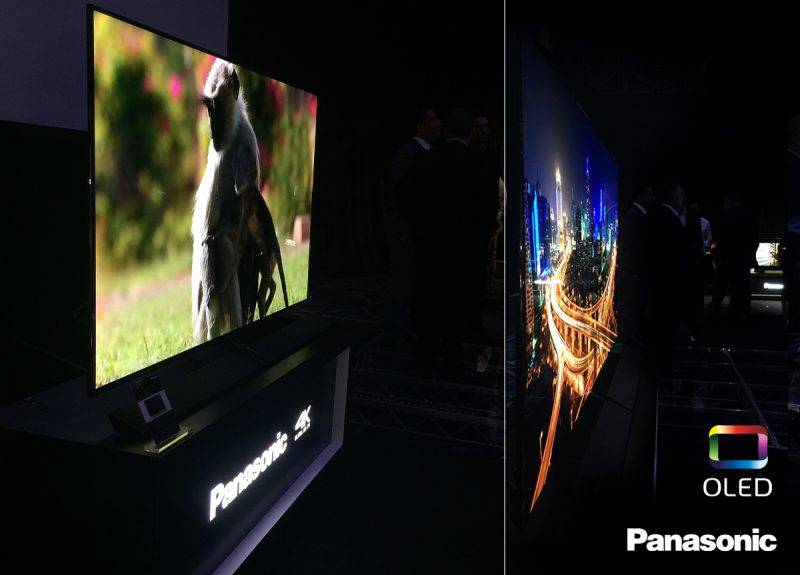

Image courtesy Panasonic
OLED TVs, for comparison, can easily be viewed at drastic angles with no degradation in brightness. Some OLED TVs can even go as far as 84 degrees. QLED TVs may still be trying to improve but if you want for your huge family to come over and watch a movie, you may want to get an OLED TV.
Eye Comfort
We have all been able to binge-watch a four-hour-long TV show or even longer. What follows later, forcing you to have a few breaks, is eye fatigue. This is mostly caused due to the blue light emitted by the screens. LCD-based sets tend to show more intense blue light than anything.
QLED that then depends on LCD gives more of that light compared to OLED that has no backlight. This is one factor that has been a real problem for the human eye, going as far as causing sleeplessness and a whole range of health problems to the body.
Power Consumption
OLED panels do not require a super-bright backlight. LCD panels consume a fair amount of power, to produce huge amounts of light. For that, OLED TVs are more energy-efficient as they don’t require that much light. They also emit less heat than QLED TVs as a result.
Price
What do you think? If you walked to your local electronics store, an LG TV is probably one of if not the most expensive. In fact, their OLED TVs are also some of the most pricy in the market.
The OLED tech is obviously more expensive to acquire and produce compared to the QLED. However, they have of late been forced to come down due to the competition from QLED TVs that are much cheaper.
As of now though, QLED TVs from various brands still enjoy a slight edge in the price department, which may be part of the reason why Samsung sold twice as many QLED TVs as LG sold their OLED TVs in 2019.
Verdict
After all, is said, it is no doubt that the OLED is better when it comes to everyday performance and efficiency. But the fact is that you cannot go wrong with either. Who wouldn’t want a bright TV that is way cheaper and even competes fairly when it comes to vibrance.
On the other hand, if you want everything that is right on a TV but at a really huge price, then an OLED TV wouldn’t do you any injustice.






[…] You also get 3 USB ports and 1 HDMI port for connecting to any other external device. It houses an LED display which would be disappointing for those who are deep into high-quality […]
[…] Like OLED, micro LEDs have the advantage of producing better contrast levels since every pixel turn off and on individually. This goes on to create deeper black levels without the risk of burning. […]